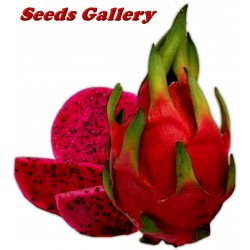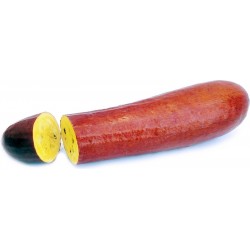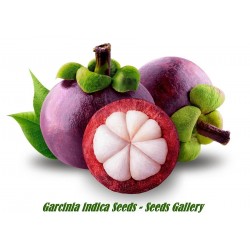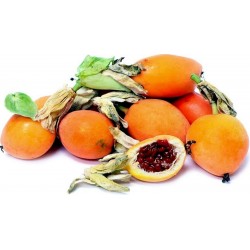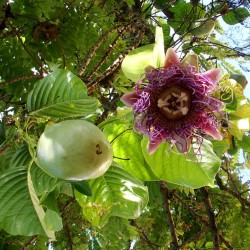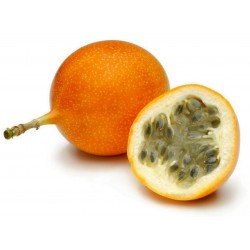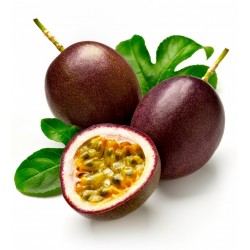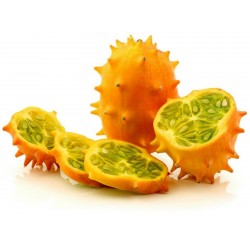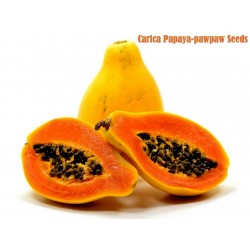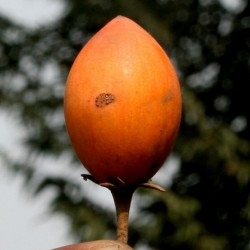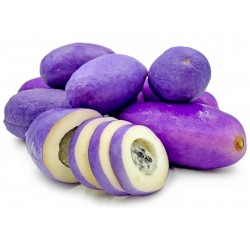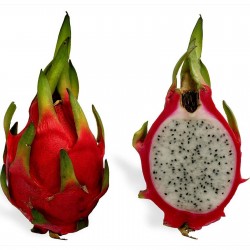
Pitaya tohumu (Hylocereus...
Fiyat
€2,35
SKU: V 12 W
Seeds Gallery Com,
5/
5
<h2><strong>Pitaya tohumu</strong></h2>
<h2><span style="color: #ff0a0a;"><strong>20 veya 100 tohumların Paketi için fiyat.</strong></span></h2>
<div>
<p style="color: #202122; font-size: 14px;"><b>Pitaya</b>, bilimsel anlamda<span> </span><i>Hylocereus</i><span> </span>cinsi çeşitli<span> </span>kaktüs<span> </span>türlerinin (<b>tatlı pitaya</b>) olarak adlandırılan meyvesidir. En önemlisi ve yaygın olanı da<span> </span><i>Hylocereus</i><span> </span>cinsinden olanlardır.</p>
<p style="color: #202122; font-size: 14px;" class="">Ancak bu cinsin yanında dünyada çeşitli halklarca<span> </span><i>Stenocereus</i><span> </span>(<b>ekşi pitaya</b>) cinsinden kaktüs<span> </span>türlerinin<span> </span>meyvesi de bu adla bilinmekte ve çeşitli ülkelerde bu türün meyveleride kültür olarak yetiştirilmektedir.Dahası bir kısım bilim insanları Hylocereus cinsinin bağımsız bir cins olarak değil,<span> </span><i>Stenocereus</i><span> </span>ailesi içerisinde göstermektedir. Buna ilaveten Perulularca (Cereeae) cinsi nadir bulunan Peru elma kaktüsü (<i>Cereus repandus</i>), da pitaya adıyla tanınmaktadır.</p>
<p style="color: #202122; font-size: 14px;">İngilizcede<span> </span><b>ejder meyvesi</b><span> </span>(İngilizce: "dragon fruit") olarak da adlandırılır. İngilizcedeki bu ad Asya dillerindeki adlarının tercümesidir.<span> </span>Çince<span> </span><b>huǒ lóng guǒ</b><span> </span>火龍果/火龙果 "ateş ejderhası meyvesi" ve<span> </span><b>lóng zhū guǒ</b><span> </span>"ejderha mücevheri meyvesi",<span> </span>Vietnamca<span> </span><b>thanh long</b><span> </span>(<i>yeşil ejderha</i>),<span> </span>Endonezce<span> </span><b>buah naga</b><span> </span>"ejderha meyvesi" olarak da adlandırılır.</p>
<p style="color: #202122; font-size: 14px;">Bunun yanında çeşitli toplumlarca<span> </span><b>çilek armudu<span> </span></b>gibi adlarla anılmaktadır.</p>
<h2 style="color: #000000; font-size: 1.5em;"><span class="mw-headline" id="Dağılımı">Dağılımı</span></h2>
<p><i>Hylocereus</i><span> </span>türü pitaya üreten kaktüslerin anavatanı<span> </span>Meksika,<span> </span>Orta Amerika<span> </span>ve<span> </span>Güney Amerika<span> </span>dır. Ayrıca<span> </span>Asya'da<span> </span>Endonezya, Güney Cava, Tayvan,<span> </span>Vietnam,<span> </span>Tayland,<span> </span>Filipinler,<span> </span>Sri Lanka,<span> </span>Malezya, yeni olarak<span> </span>Bangladeş<span> </span>'de üretimi yapılmakta ve kültür türleri yetiştirilmektedir.<sup id="cite_ref-1" class="reference" style="font-size: 11.2px;">[1]</sup><span> </span>Ayrıca<span> </span>Okinawa,<span> </span>Hawai,<span> </span>İsrail, kuzey<span> </span>Avustralya<span> </span>ve Güney<span> </span>Çin'de de yetiştirilmektedir. Son yıllarda Türkiye'nin Adana ve Mersin illerinde üretilmeye başlamıştır.<sup id="cite_ref-2" class="reference" style="font-size: 11.2px;">[2]</sup></p>
<p><i>Hylocereus</i><span> </span>sadece geceleri çiçek açar. Büyük beyaz kokulu çiçekleri tipik şeklinden ötürü<span> </span><b>ay çiçeği</b><span> </span>veya<span> </span><b>gecenin kraliçesi</b><span> </span>olarak da anılır. Tatlı pitayalar krem gibi bir etli kısma ve lezzetli bir tada sahiptir. Ayrıca, bahçe bitkisi olarak dışarıda, salon çiçeği olarak da evlerde yetiştirilmektedir.</p>
<h2 style="color: #000000; font-size: 1.5em;"><span id="T.C3.BCrleri"></span><span class="mw-headline" id="Türleri">Türleri</span></h2>
<p><i>Stenocereus</i><span> </span>(<b>Ekşi pitaya</b>), Amerika'nın kurak bölgelerinde yenen ve ihraç edilen bir türdür. Tadı çok ekşi ve ferahlatıcıdır. Doğa yürüyüşçülerininde gözdesidir. Bilinen<span> </span><b>Ekşi Pitaya</b><span> </span>ya da<span> </span><i><b>pitaya agria</b></i><span> </span>(<i>S. gummosus</i>)<sup id="cite_ref-3" class="reference" style="font-size: 11.2px;">[3]</sup><span> </span>Sonora Çölünde<span> </span>Kızılderililerin<span> </span>önemli bir besin kaynağıdır. Kuzeybatı Meksika'da<span> </span>Seri halkı<span> </span>hâla büyük özen gösterdikleri bu meyveyi hasat etmektedirler<span> </span><sup id="cite_ref-4" class="reference" style="font-size: 11.2px;">[4]</sup><span> </span>bu bitkiyi<span> </span><i><b>ziix is ccapxl</b></i><span> </span>– "ekşi meyveye sahip şey" diye adlandırırlar. Bu tür meyveye sahip türler<span> </span><i>S. queretaroensis</i><span> </span>ve Hançer kaktüsü (<i>S. griseus</i>),<sup id="cite_ref-5" class="reference" style="font-size: 11.2px;">[5]</sup><span> </span>önemli bir besin kaynağıdır. Tatlı tipte meyveler üreten ve tatlı pitaya diye adlandırılan ve pitaya ile karıştırılan<span> </span>Org borulu kaktüs<span> </span>(<i>S. thurberi</i>) meyvesi(<i><b>ool</b></i><span> </span>diye Serilerce adlandırılır) ise bu bölgedeki yerlilerce fazla büyük miktarlarda yetiştirilmez. Bu cinsin meyvesi<span> </span><i>Hylocereus</i><span> </span>meyvelerinden daha tatlı<span> </span>kavun<span> </span>tadı gibidir ve bunun yanında<span> </span>geleneksel tıpta<span> </span>kullanılmaktadır.</p>
<p>(Cereeae) cinsi nadir bulunan Peru elma kaktüsü (<i>Cereus repandus</i>), Perulularca pitaya adıyla tanınmaktadır.</p>
<h2 style="color: #000000; font-size: 1.5em;"><span id=".C3.9Cretimi"></span><span class="mw-headline" id="Üretimi">Üretimi</span></h2>
<div class="thumb tright">
<div class="thumbinner" style="font-size: 13.16px;"><img alt="" src="https://upload.wikimedia.org/wikipedia/commons/thumb/4/45/Pitaya_in_Israel.jpg/250px-Pitaya_in_Israel.jpg" decoding="async" width="250" height="333" class="thumbimage" srcset="//upload.wikimedia.org/wikipedia/commons/thumb/4/45/Pitaya_in_Israel.jpg/375px-Pitaya_in_Israel.jpg 1.5x, //upload.wikimedia.org/wikipedia/commons/thumb/4/45/Pitaya_in_Israel.jpg/500px-Pitaya_in_Israel.jpg 2x" data-file-width="1920" data-file-height="2560" />
<div class="thumbcaption" style="font-size: 12.3704px;">
<div class="magnify"></div>
<span style="color: grey;">pitaya ile birlikte<span> </span><i>Cereus repandus</i><span> </span>bitkisi<span> </span>Sde Nitzan, Israil</span></div>
</div>
</div>
<p>Meyve etinden ayrılan tohumlar kurutulup depolanır, ideal olan kusuru olmayan ve olgunlaşmış meyvelerdir.</p>
<p>Tohumlar kompost ya da karışım toprakta eğer salon bitkisi olarak yetiştirilecekse iyi büyütülürler - sık ekimden genelde yaklaşık 11 ile 14 gün aradı bir sürede bitkiler çimlenir. Kaktüs oldukları zaman boyunca aşırı sulamadan kaçınılması gerekir. Gelişimleri devam ettikçe bu tırmanıcı bitki tırmanacak bir yerler aramakta bazal kökleri yanında yan yardımcı kökler oluşturmaktadır. Bitki 4,5 kilogram gibi bir ağırlığa ulaştığında çiçeklerini görmeye başlayabilirsiniz.</p>
<p>Pitaya kaktüsleri geceleri çiçek açıp, çiekleri sabahleyin solar.<span> </span>Yarasa<span> </span>veya<span> </span>güve<span> </span>gibi yaratıkları bitki diğer bir pittaya ile tozlaşma için kullanmaktadır. Kendi kendine tozlaşma, meyve üretimine neden olmaz bu durum evde bu kaktüsleri yetiştirenleri zorlamaktadır. Zira meyve için bir değil 2 tane bitkiye gereksinim vardır.</p>
<p>Bununla birlikte bitki gerekli büyüme ortamında 3 ila 6 kez çiçek açabilir.En önemlisi diğer kaktüsler gibi eğer sağlıklı bir gövde, sap kısmı bitkiden kopup toprağa gömülürse bu durumda bu gövde köklenip ayrı bir bitki oluşturabilir. Bu da üreme ve meyve için kestirme bir yoldur.</p>
<p>Bitki 40 dereceye kadar sıcakları ve çok kısa süreli soğukları kaldırabilir. Ancak uzun süreli dondurucu soğukları kaldıramaz. USDA cinsinden soğuğa dayanıklılık haritasında 10-11. bölgelerde yaşayabilir bununla birlikte 9a ve 9b bölgelerinde dışarıda bitkinin yaşayabilmesi ihtimali vardır.<sup id="cite_ref-6" class="reference" style="font-size: 11.2px;">[6]</sup><sup id="cite_ref-7" class="reference" style="font-size: 11.2px;">[7]</sup><sup id="cite_ref-8" class="reference" style="font-size: 11.2px;">[8]</sup></p>
<p><i>Hylocereus</i><span> </span>ortalama yağış alan kuru tropikal iklimlerde yaşamaya adapte olmuştur. Ejder meyveleri çiçeklenmeden 30 ila 50 gün sonra kaktüs gibi ağaçlarda oluşur. Yılda 5-6 ürün bu bitkiden alınabilir.Vietnam'da her yıl<span> </span>hektar<span> </span>başına 30 ton ürün alan çiftlikler bulunmaktadır.<sup id="cite_ref-9" class="reference" style="font-size: 11.2px;">[9]</sup></p>
<h3 style="color: #000000; font-size: 1.2em;"><span id="Zararl.C4.B1lar_ve_hastal.C4.B1klar"></span><span class="mw-headline" id="Zararlılar_ve_hastalıklar">Zararlılar ve hastalıklar</span></h3>
<p>Aşırı sulama ve yağış bitkinin çiçeklerinin düşmesine, meyvelerinin çürümesine sebep olur. Kuşlar da sıkıntı yaratabilir. Ayrıca<span> </span>bakteri<span> </span>olarak<span> </span><i>Xanthomonas campestris</i><span> </span>saplarında çürümeye sebep olabilir.<span> </span><i>Dothiorella</i><span> </span>Fungisi<span> </span>meyvelerde kahverengi noktalara neden olabilir ama bu pek sık rastlananbir durum değildir.</p>
<h2 style="color: #000000; font-size: 1.5em;"><span class="mw-headline" id="Meyvesi">Meyvesi</span></h2>
<p><b>Tatlı pitayalar</b><span> </span>kösele gibi,hafif lifli bir kabuğa sahip olup 3 türe ayrılmıştır.</p>
<ul>
<li><i>Hylocereus undatus</i><span> </span>(<b>kırmızı pitaya</b>) Beyaz etli kısma,kırmızı kabuğa sahiptir. En sık rastlanan "ejder meyve"lerini üreten türdür.</li>
<li><i>Hylocereus costaricensis</i><span> </span>(<b>Kosta Rika pitayası</b>, sıklıklada<span> </span><i>H. polyrhizus</i>olarak da adlandırılır) Kırmızı kabuk ve kırmızı etli kısma sahiptir.</li>
<li><i>Hylocereus megalanthus</i><span> </span>(<b>sarı pitaya</b>,<span> </span><i>Selenicereus</i>cinsi içinde sıklıkla değerlendirilebilmektedir.) Beyaz deri sarı kabuğa sahiptir.</li>
</ul>
<p>Kolombiya<span> </span>'dan<span> </span>Avustralya'ya yapılan ilk ihracatlar<span> </span><i>Hylocereus ocampensis</i><span> </span>(tahmini olarak kırmızı meyveli) ve<span> </span><i>Cereus triangularis</i><span> </span>(tahminen sarı meyveli) idi.<sup id="cite_ref-gf2008_10-0" class="reference" style="font-size: 11.2px;">[10]</sup><span> </span>Ancak yine de tam olarak bu durum bilinmemektedir.</p>
<p>Meyvelerinin ağırlığı 150 ile 600 gram arasındadır ancak bazen 1 kilograma varan meyvelerede rastlanabilmektedir.<sup id="cite_ref-gg2006_11-0" class="reference" style="font-size: 11.2px;">[11]</sup><span> </span>Meyveler toplandıktan sonra 7 °C de %80 - %90 nemde muhafaza edilmelidir.</p>
<h2 style="color: #000000; font-size: 1.5em;"><span id="T.C3.BCketimi"></span><span class="mw-headline" id="Tüketimi">Tüketimi</span></h2>
<p>Tüketimi için pitaya kesilir ve etli yüzey açığa çıkarılır.<sup id="cite_ref-gg2006_11-1" class="reference" style="font-size: 11.2px;">[11]</sup><span> </span>Meyve dokusu siyah ve çıtır tohumlarının varlığı nedeniyle<span> </span>kiviye<span> </span>benzetilir.<sup id="cite_ref-gg2006_11-2" class="reference" style="font-size: 11.2px;">[11]</sup><span> </span>Etli kısım çiğ olarak yenebilir ve hafif bir tatlılık verir<span> </span>kalori<span> </span>yönüde azdır.<sup id="cite_ref-gg2006_11-3" class="reference" style="font-size: 11.2px;">[11]</sup></p>
<p>Pitayanın damak temizleme haricinde güçlü tad içeren meyvelerle birlikte yenmemesi tavsiye edilir.<sup class="noprint Inline-Template" style="font-size: 11.2px;">[<i><span title="(January 2010)">kaynak belirtilmeli</span></i>]</sup><span> </span>Tohumları etli kısımla birlikte yenir, çıtır, fındık gibi bir tad verir.<span> </span>Lipidler<span> </span>yönünden zengindir,<sup id="cite_ref-ariffinetal2008_12-0" class="reference" style="font-size: 11.2px;">[12]</sup><span> </span>fakat ancak çiğnenirse hazmedilebilir.</p>
<p>Pitaya<span> </span>meyve suyu<span> </span>ya da<span> </span>şarap<span> </span>yapımında ya da diğer içecekleri tadlandırma, tad sağlamak için kullanılabilir.Çiçekleri<span> </span>yenilebilir veya<span> </span>çayı<span> </span>yapılabilir. Meyvenin kabuğu kesinlikle yenmez ve eğer çiftliklerde üretilmişse<span> </span>pestisitlerle<span> </span>kirletilmiş bile olabilir.</p>
<p>Kosta Rika'da çok fazla kırmızı etli pitaya yemenin<span> </span>pseudohematuriaya<span> </span>(yalancı idrarda kanamayı düşündüren kırmızı renk oluşumu) neden olduğu tespit edilmiştir.<sup id="cite_ref-13" class="reference" style="font-size: 11.2px;">[13]</sup></p>
<h3 style="color: #000000; font-size: 1.2em;"><span class="mw-headline" id="Besin_Bilgileri">Besin Bilgileri</span></h3>
<div class="thumb tright">
<div class="thumbinner" style="font-size: 13.16px;"><img alt="" src="https://upload.wikimedia.org/wikipedia/commons/thumb/1/11/Fruto_de_Stenocereus_queretaroensis.jpg/250px-Fruto_de_Stenocereus_queretaroensis.jpg" decoding="async" width="250" height="188" class="thumbimage" srcset="//upload.wikimedia.org/wikipedia/commons/thumb/1/11/Fruto_de_Stenocereus_queretaroensis.jpg/375px-Fruto_de_Stenocereus_queretaroensis.jpg 1.5x, //upload.wikimedia.org/wikipedia/commons/thumb/1/11/Fruto_de_Stenocereus_queretaroensis.jpg/500px-Fruto_de_Stenocereus_queretaroensis.jpg 2x" data-file-width="2304" data-file-height="1728" />
<div class="thumbcaption" style="font-size: 12.3704px;">
<div class="magnify"></div>
<span style="color: grey;">Yemek için hazırlanan ejder meyvesi (<i>Stenocereus queretaroensis</i><span> </span>)</span></div>
</div>
</div>
<div class="thumb tright">
<div class="thumbinner" style="font-size: 13.16px;"><img alt="" src="https://upload.wikimedia.org/wikipedia/commons/thumb/5/58/Dragonfruit028.JPG/250px-Dragonfruit028.JPG" decoding="async" width="250" height="227" class="thumbimage" srcset="//upload.wikimedia.org/wikipedia/commons/thumb/5/58/Dragonfruit028.JPG/375px-Dragonfruit028.JPG 1.5x, //upload.wikimedia.org/wikipedia/commons/thumb/5/58/Dragonfruit028.JPG/500px-Dragonfruit028.JPG 2x" data-file-width="648" data-file-height="588" />
<div class="thumbcaption" style="font-size: 12.3704px;">
<div class="magnify"></div>
<span style="color: grey;">Tayland'da satılan ejder meyvesi suyu</span></div>
</div>
</div>
<p>100 g olgun pitaya'nın (bunun 55 gramı yenebilir)günlük besin değerleri aşağıdadır :</p>
<ul>
<li>Su 80-90 g</li>
<li>Karbonhidrat<span> </span>9-14 g</li>
<li>Protein<span> </span>0.15-0.5 g</li>
<li>Yağ<span> </span>0.1-0.6 g</li>
<li>Lif 0.3-0.9 g</li>
<li>Kül 0.4-0.7 g</li>
<li>Kalori: 35-50</li>
<li>Kalsiyum<span> </span>6–10 mg</li>
<li>Demir<span> </span>0.3-0.7 mg</li>
<li>Fosfor<span> </span>16 – 36 mg</li>
<li>Karoten<span> </span>(Vitamin A) traces</li>
<li>Tiyamin<span> </span>(Vitamin B<sub style="font-size: 11.2px;">1</sub>) traces</li>
<li>Riboflavin<span> </span>(Vitamin B<sub style="font-size: 11.2px;">2</sub>) traces</li>
<li>Niasin<span> </span>(Vitamin B<sub style="font-size: 11.2px;">3</sub>) 0.2-0.45 mg</li>
<li>Askorbik asit<span> </span>(Vitamin C) 4–25 mg</li>
</ul>
<p>-Bu değerler kültür cinsleri,türleri ve yetiştirme şartlarına göre değişiklik gösterebilir..-</p>
<p>2 pitaya tohum yağının içerdikleri değerlerde aşağıdadır:<sup id="cite_ref-ariffinetal2008_12-1" class="reference" style="font-size: 11.2px;">[12]</sup></p>
<table class="wikitable">
<tbody>
<tr>
<th></th>
<th><i>Hylocereus polyrhizus</i><br />(<b>Kosta Rika pitayası</b>)</th>
<th><i>Hylocereus undatus</i><br />(<b>Kırmızı pitaya</b>)</th>
</tr>
<tr>
<td>Miristik asit</td>
<td>0.2%</td>
<td>0.3%</td>
</tr>
<tr>
<td>Palmitik asit</td>
<td>17.9%</td>
<td>17.1%</td>
</tr>
<tr>
<td>Stearik asit</td>
<td>5.49%</td>
<td>4.37%</td>
</tr>
<tr>
<td>Palmitoleik asit</td>
<td>0.91%</td>
<td>0.61%</td>
</tr>
<tr>
<td>Oleik asit</td>
<td>21.6%</td>
<td>23.8%</td>
</tr>
<tr>
<td>Cis-vassenik asit</td>
<td>3.14%</td>
<td>2.81%</td>
</tr>
<tr>
<td>Linoleik asit</td>
<td>49.6%</td>
<td>50.1%</td>
</tr>
<tr>
<td>Linolenik asit</td>
<td>1.21%</td>
<td>0.98%</td>
</tr>
</tbody>
</table>
<ul>
<li>Genelde kırmızı kabuklu pitayalar<span> </span>C vitamini<span> </span>kaynağıdır.<sup id="cite_ref-asgf2008_14-0" class="reference" style="font-size: 11.2px;">[14]</sup></li>
<li>Pitayalar lif ve mineral yönünden zengindir, örneğin fosfor ve kalsiyum. Genelde kırmızı pitayalar bu yönden zengin olarak bilinir, sarılar bunun arkasındadır.<sup id="cite_ref-asgf2008_14-1" class="reference" style="font-size: 11.2px;">[14]</sup></li>
<li>Tohumlar çoklu doymamış<span> </span>yağ asidi<span> </span>yönünden zengindir ve genelde kırmızı ejder meyveleri çok az doymuş yağ asidi içerir.<sup id="cite_ref-ariffinetal2008_12-2" class="reference" style="font-size: 11.2px;">[12]</sup></li>
<li>Pitayalar ayrıca önemli miktarda<span> </span>fitoalbumin,<span> </span>antioksidan, kanseri önleyici<span> </span>serbest radikaller<span> </span>içerir.<sup id="cite_ref-15" class="reference" style="font-size: 11.2px;">[15]</sup></li>
<li>Tayvan'da,<span> </span>diyabetikler<span> </span>bu meyveyi yüksek<span> </span>diyet lifi<span> </span>içermesi nedeniyle pirinç yerine kullanırlar.<sup id="cite_ref-gf2008_10-1" class="reference" style="font-size: 11.2px;">[10]</sup></li>
<li>Pitaya vücuttan<span> </span>Ağır metal<span> </span>toksin atılımını hızlandırdığı ve<span> </span>kolesterol<span> </span>ile<span> </span>tansiyonu<span> </span>düşürdüğü iddia edilmektedir. Düzenli yemenin kronik<span> </span>solumum yolu rahatsızlıklarına<span> </span>iyi geldiği iddia edilmektedir.<sup id="cite_ref-gf2008_10-2" class="reference" style="font-size: 11.2px;">[10]</sup></li>
</ul>
</div>
<div>
<p></p>
<table cellspacing="0" cellpadding="0" border="1">
<tbody>
<tr>
<td colspan="2" width="100%" valign="top">
<p><span style="color: #008000;"><strong>Sowing Instructions</strong></span></p>
</td>
</tr>
<tr>
<td valign="top" nowrap="nowrap">
<p><span style="color: #008000;"><strong>Propagation:</strong></span></p>
</td>
<td valign="top">
<p><span style="color: #008000;">Seeds / Cuttings</span></p>
</td>
</tr>
<tr>
<td valign="top" nowrap="nowrap">
<p><span style="color: #008000;"><strong>Pretreat:</strong></span></p>
</td>
<td valign="top">
<p><span style="color: #008000;">0</span></p>
</td>
</tr>
<tr>
<td valign="top" nowrap="nowrap">
<p><span style="color: #008000;"><strong>Stratification:</strong></span></p>
</td>
<td valign="top">
<p><span style="color: #008000;">0</span></p>
</td>
</tr>
<tr>
<td valign="top" nowrap="nowrap">
<p><span style="color: #008000;"><strong>Sowing Time:</strong></span></p>
</td>
<td valign="top">
<p><span style="color: #008000;">all year round</span></p>
</td>
</tr>
<tr>
<td valign="top" nowrap="nowrap">
<p><span style="color: #008000;"><strong>Sowing Depth:</strong></span></p>
</td>
<td valign="top">
<p><span style="color: #008000;">Light germinator! Just sprinkle on the surface of the substrate + gently press</span></p>
</td>
</tr>
<tr>
<td valign="top" nowrap="nowrap">
<p><span style="color: #008000;"><strong>Sowing Mix:</strong></span></p>
</td>
<td valign="top">
<p><span style="color: #008000;">Coir or sowing mix + sand or perlite</span></p>
</td>
</tr>
<tr>
<td valign="top" nowrap="nowrap">
<p><span style="color: #008000;"><strong>Germination temperature:</strong></span></p>
</td>
<td valign="top">
<p><span style="color: #008000;"> about 25-28 ° C</span></p>
</td>
</tr>
<tr>
<td valign="top" nowrap="nowrap">
<p><span style="color: #008000;"><strong>Location:</strong></span></p>
</td>
<td valign="top">
<p><span style="color: #008000;">bright + keep constantly moist not wet</span></p>
</td>
</tr>
<tr>
<td valign="top" nowrap="nowrap">
<p><span style="color: #008000;"><strong>Germination Time:</strong></span></p>
</td>
<td valign="top">
<p><span style="color: #008000;"> 2-4 Weeks</span></p>
</td>
</tr>
<tr>
<td valign="top" nowrap="nowrap">
<p><span style="color: #008000;"><strong>Watering:</strong></span></p>
</td>
<td valign="top">
<p><span style="color: #008000;">Water regularly during the growing season</span></p>
</td>
</tr>
<tr>
<td valign="top" nowrap="nowrap">
<p><span style="color: #008000;"><strong> </strong></span></p>
</td>
<td valign="top">
<p><br /><span style="color: #008000;">Copyright © 2012 Seeds Gallery - Saatgut Galerie - Galerija semena. All Rights Reserved.</span></p>
</td>
</tr>
</tbody>
</table>
<p></p>
<p></p>
<p></p>
</div>
<script src="//cdn.public.n1ed.com/G3OMDFLT/widgets.js"></script>
V 12 W (20 S)





